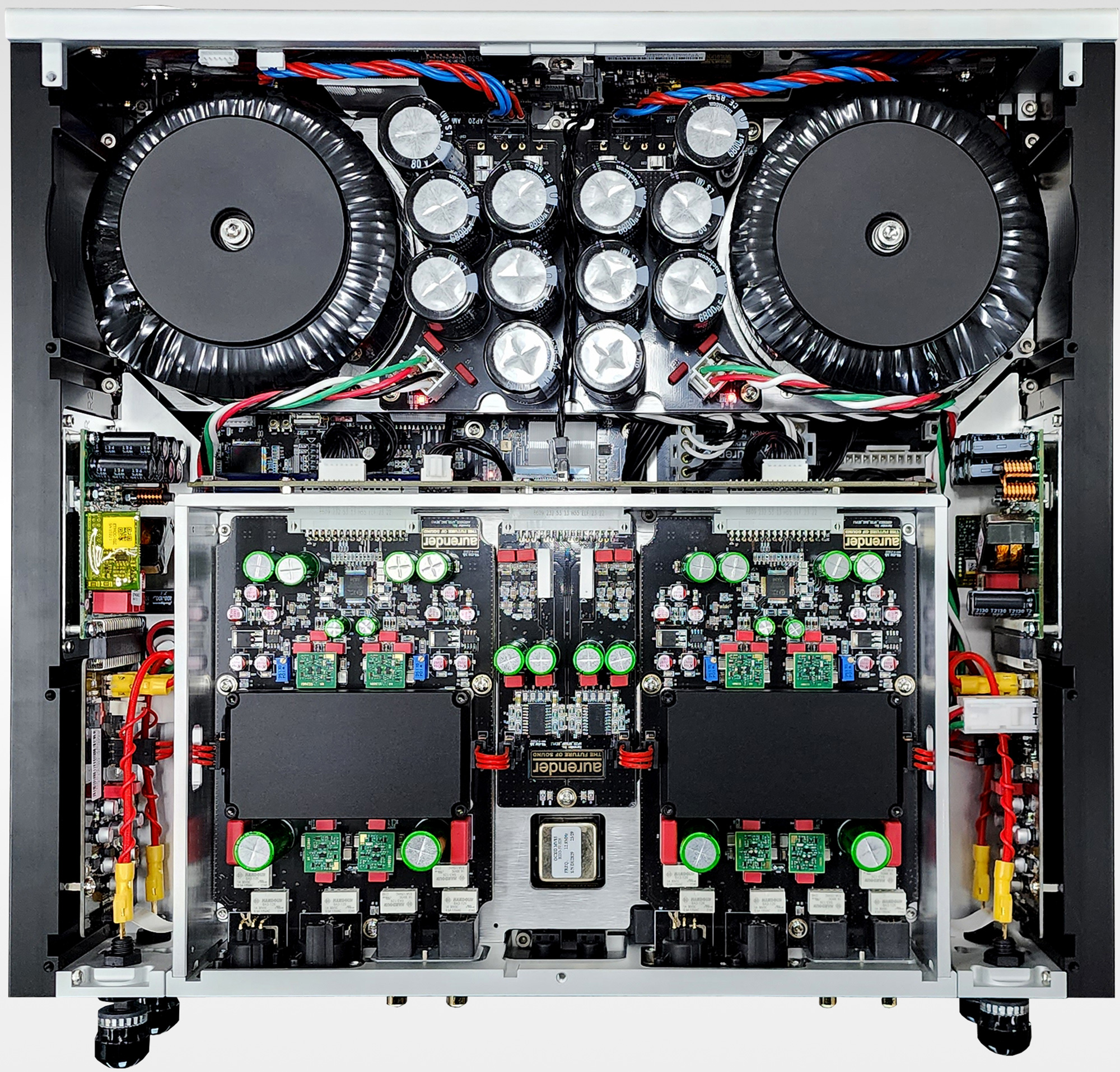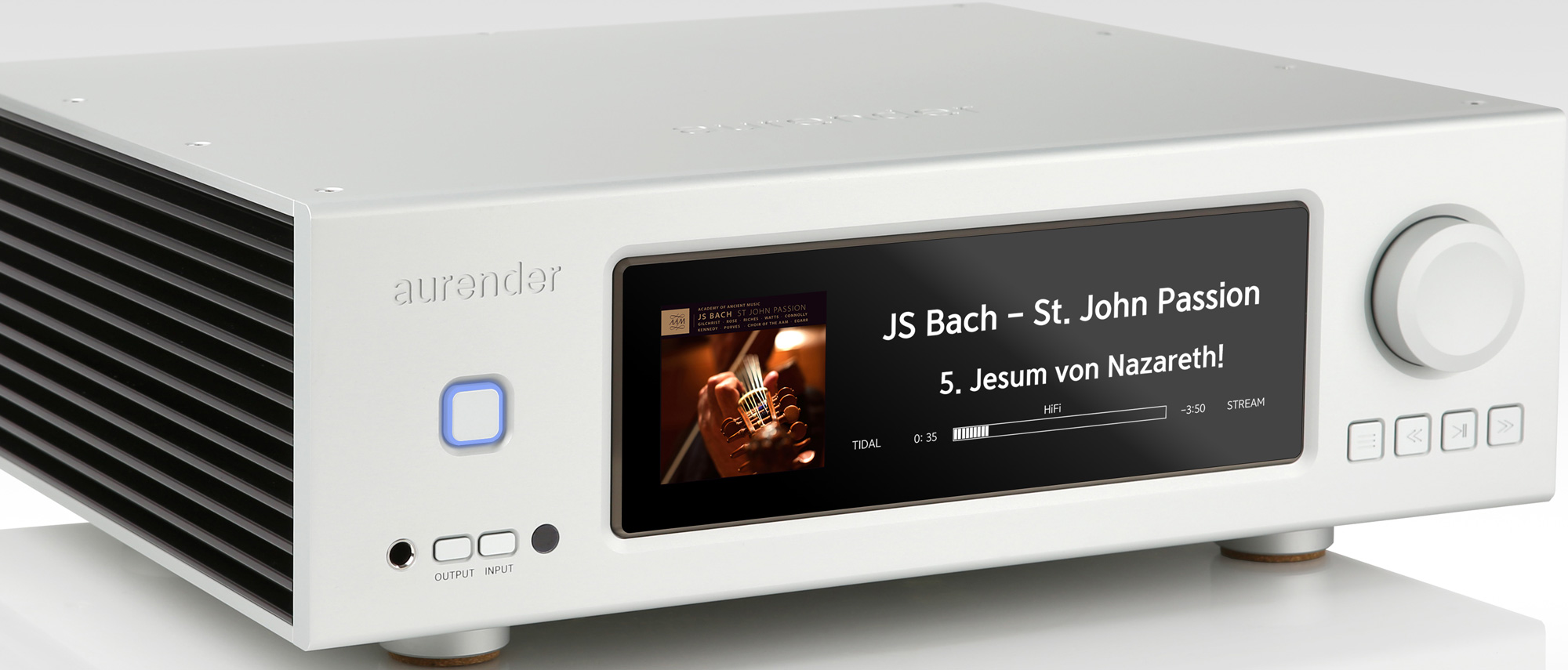Balanced signals undergo individual attenuation, and each stage features two contacts connected in parallel to minimize contact resistance and prevent sound quality degradation.
After volume adjustment, signals pass through an output buffer block using an ultra-low-noise instrumentation op-amp structure. This block comprises two fully discrete Class-A op-amps.
The AP20 Preamp block is fundamentally designed to eliminate digital noise and DC components completely. After volume control, it employs a low-noise, high-quality buffer stage and an audio transformer tuned to meet the requirements of a high-quality preamplifier.”
The hollowness in the entire frequency spectrum from the preamp circuits of the AP20 is uncanny. It features one of the purest and most dynamic line stages I’ve experienced in recent memory. Playing a 45 Angel Sonic Series LP of Karajan Conducts Wagner via the Pass Labs Xs Phono, amplifying the signal from the Audio Note IO Ltd cartridge system and driving the Orchard Audio SMUP monoblocks, the stunning, contrasting dynamics as accorded exclusively by 45 rpm records came through unscathed. This was one of the most satisfying analog playback moments in recent memory.
The AP20 preamp is devoid of inherent impurities and taint, able to pass on the sound of the Bricasti Design M21 DAC at the highest level of integrity. The amalgamation of tonality and transient taking place inside the AP20 is of such pristineness that the Aurender projects an otherwise big, empty ballroom with space enough to shed proper light on any and all instruments and ensembles placed into it. The AP20 is more than just a world-class integrated amplifier; it is a hollow preamp of the highest order albeit featuring only one pair of analog output and in the XLR no less.
In the ensuing days I rotated everything from cartridges and phono stages to DACs, CD and SACD players of varying vintages through the Aurender just to experience what the hollowness of the Aurender would reveal. Fun! I haven’t enjoyed a preamp this much for a long time. The fact that the Aurender preamp comes with a cache player, a DAC and a power amplifier is just mindboggling icing on the cake.
Perception matters. Many high-end amplifier manufacturers choose not to venture into the digital realm and risk inviting skepticism from the audiophile community. Witness the demise of companies trying to be a one-stop shop. The audiophile mindset is one that prefers a specific brand that specializes in one product category. Venturing into a second product type can induce the opposite of consumer confidence. There are exceptions, of course, such as Bricasti Design, because firstly it is a professional recording studio system specialist to begin with, and secondly audiophiles trust only one class of people above their own opinion, and that is the recording and mastering engineers. For a company to have its systems adopted by recording studios means the world to audiophiles.
It is difficult to create an integrated amplifier that rivals separates, and the end result is often a hundred-pound behemoth that costs more than some very high-performing separates and must be situated in the prime real estate of a central position between speakers. The AP20 is a stunning piece of engineering and weighs a meager 60 lbs, and is considerably more than just a digital masterpiece. It marks Aurender’s formal declaration of incursion into the larger high-end segment by the incorporation of an analog preamplification stage, and what an engineering feat it is.
Companies’ objectives for their products vary, in the case of digital platforms, some often choose to err on the safe side by engineering their products to sound softer and less dynamic in the hope of casting a wider chasm between the mass of digital players and theirs. The Aurender is a details king, albeit a soft sounding one and never once gets in my face. Its ability to focus on tonal complexity of instruments on stage makes it deserving of the highest accolade normally achieved by prized separates.
I have to trust my mind to give the AP20 the acknowledgment it deserves, even if it were using class D amplification. Because my brain says “class A sound” every time the Aurender plays music, I decided I couldn’t care less if it were running on class D. Implementation bests all.
Contrasting systems of DACs, preamps and power amps, the Aurender is a novel product that is powerful in differentiating recording qualities. With the advent of current generation of class D amplification, decades of circuit miniaturization efforts have now finally succeeded in creating the superb refinement as evident in the AP20. The need to separate stages to harness their own, dedicated power regulation for maximum performance is now moot. It is among the most class A sounding amplifiers I’ve heard.
With the AP20, Aurender has crossed over the great analog/digital divide and cemented its status as more than a leader in digital playback technology. In a single breakout stroke, the Aurender AP-20 demonstrates class leading performance in analog preamplification technology, as well as digital power amplification. And to witness the digital amplification exerting its dominance over my Sound Lab is mind boggling. I don’t want the Aurender to be more perfect or more powerful or more anything. Even with redbook CD files, the machine sounds like it was playing master tapes. Now, the audiophile in me is never content and will always want new things to play with, but the Aurender is the truthsayer and it deserves to be considered a reference.
To the companies charging exorbitant amounts for their products, don’t tell me how good your design is, just tell me you’ve listened to the AP20 and your machine can beat it for less, or you’re just wasting both yours and my time. Of course, Aurender would like everyone to think of the AP20 as the end-all machine, it may well be to many, but as an audiophile and knowing myself, I will never stop exploring the new products and technologies. And I will always want to come back to the AP20.
I have heard what DACs of discrete components and not namebrand chipsets such as the Esoteric, Bricasti Design and Technics have achieved, and to hear the third generation Asahi Kasei 32-bit DAC implemented in a circuitry that is capable of such sophistication in tonal differentiation and yet with such purity and glow is a treat, every time.
The AP20 follows in a long line of digital platforms from the company and represents its most evolved thinking, each section of the machine building on the success of a previous flagship, with incremental and not leaps and bounds increases in pricing. Can anyone top that and for less?
The story of Aurender begins with their thoughtfully crafted computer memory cache playback systems that contain docking ports for solid-state drives, which in turn store the music data files. The AP20 is not more advanced than the Technics SU-R1000, but it is purer sonically, and it comes with a worldclass cache player. I wish the AP20 costs less, but I don’t recall hearing a purer sounding preamp in recent memory. Whether the machine justifies the $22,000 price tag ($24,200 as of 8/6/25) to readers shopping in and above this price range is dependent on the individual, being mindful that the U.S. recently imposed a 15% South Korea import tariff that will push the price near the $26,000 mark in the coming months.
While the Technics produces state-of-the-art performances in a complex and complete package that includes a high-end phono stage for $10,000, now $12,399.99 alsso due to the new Japan import tariff of 15%, the Aurender achieves the feat of creating its first all-in-one integrated amplifier complete with an analog preamplification section rivaling other reference class preamplifiers.
For sheer value, the Technics is hard to beat and it remains my personal reference, but the Aurender delivers the ultimate performance at the lowest price among competitors I am aware of. It is a triumph in both sheer beauty in industrial design and cost-to-performance value. What a bold move.
Review System:
Acoustic Sciences Corporation TubeTraps
Audience AV frontROW cable system
Audio Reference Technology Sensor Haute Couture spade speaker cables
Audio Reference Technology Analysts EVO RCA
Audio Reference Technology Analysts SE interconnects, power cables
Audio Reference Technology Super SE interconnects, power cables
Stage III Concepts Ckahron XLR interconnects
Audio Reference Technology Distributor X
Audio Note UK IO field-coil cartridge system
Audio Note UK AN-S1 six-wire tonearm
Technics SP-10 MK2A turntable system
Pass Laboratories Xs Phono
Aurender N200 high-performance digital output network transport
Bricasti Design M21 DSD DAC
Atma-Sphere MP-1 3.3 tube balanced preamplification system
Orchard Audio Starkrimson Mono Ultra Premium monoblocks
Pass Laboratories XA200.8 pure class A monoblocks
Sound Lab Majestic 945 electrostatic panels
- ← Previous page
- (Page 4 of 4)

